
Hex Mayflies
Hexagenia limbata
The famous nocturnal Hex hatch of the Midwest (and a few other lucky locations) stirs to the surface mythically large brown trout that only touch streamers for the rest of the year.
Featured on the forum

Nymphs of this species were fairly common in late-winter kick net samples from the upper Yakima River. Although I could not find a key to species of Zapada nymphs, a revision of the Nemouridae family by Baumann (1975) includes the following helpful sentence: "2 cervical gills on each side of midline, 1 arising inside and 1 outside of lateral cervical sclerites, usually single and elongate, sometimes constricted but with 3 or 4 branches arising beyond gill base in Zapada cinctipes." This specimen clearly has the branches and is within the range of that species.

Troutnut is a project started in 2003 by salmonid ecologist Jason "Troutnut" Neuswanger to help anglers and
fly tyers unabashedly embrace the entomological side of the sport. Learn more about Troutnut or
support the project for an enhanced experience here.
Landscape & scenery photos from Spring Creek
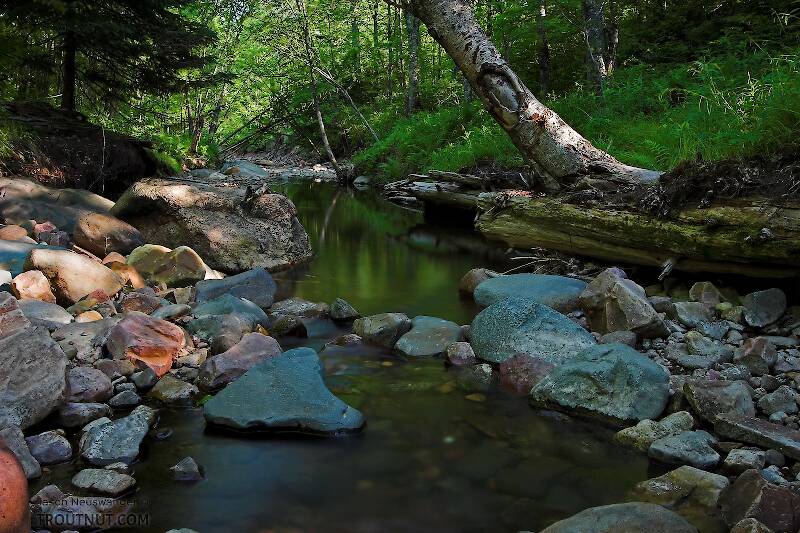
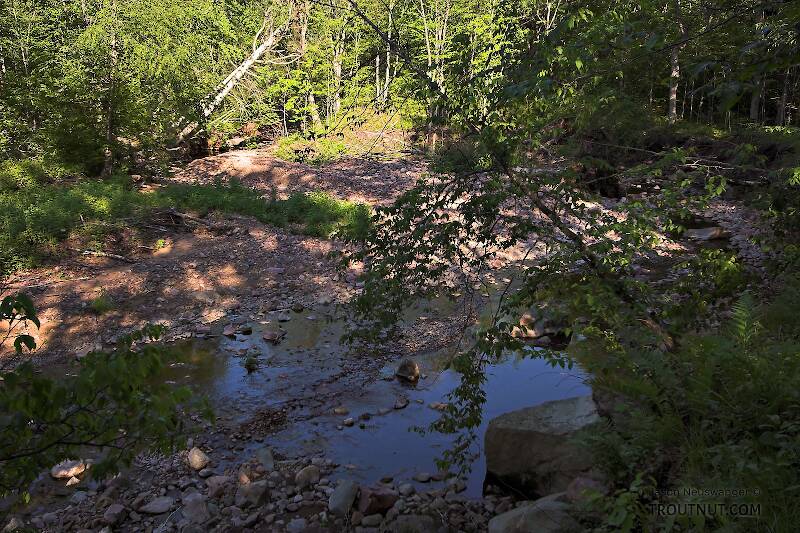
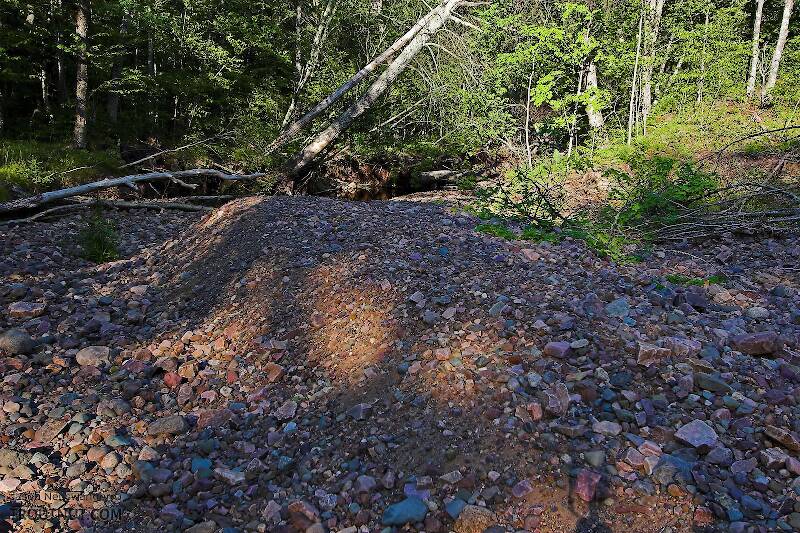
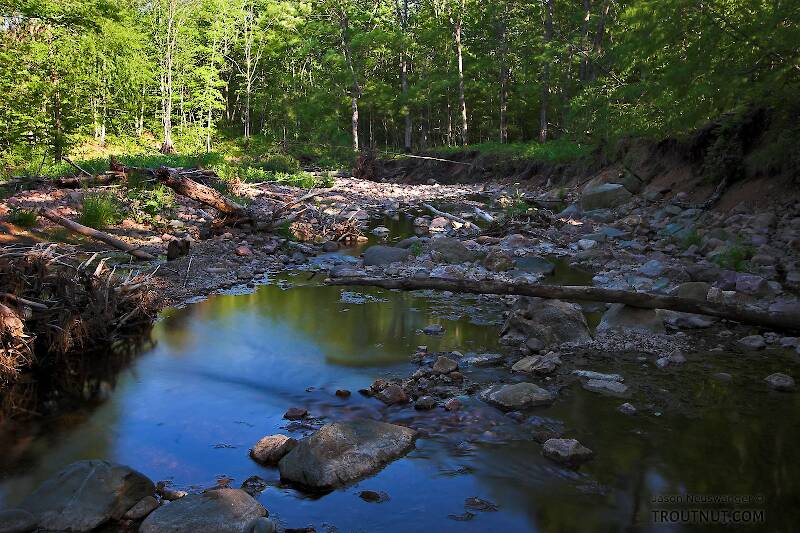
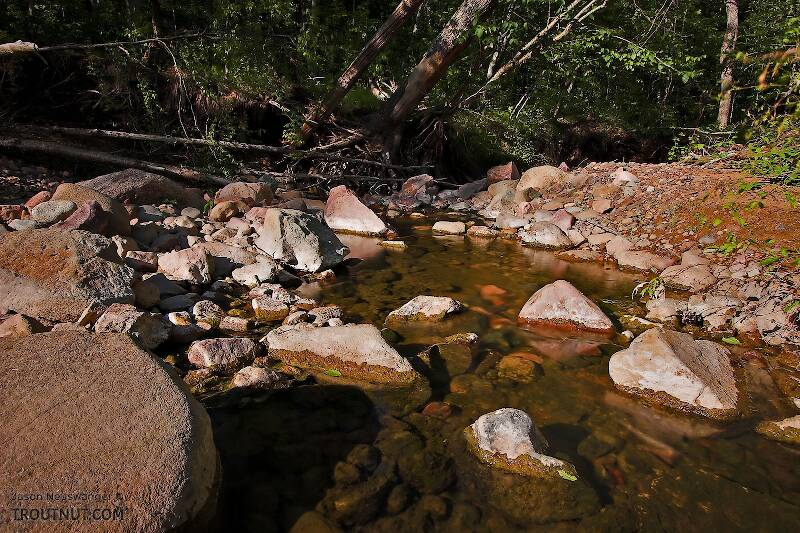
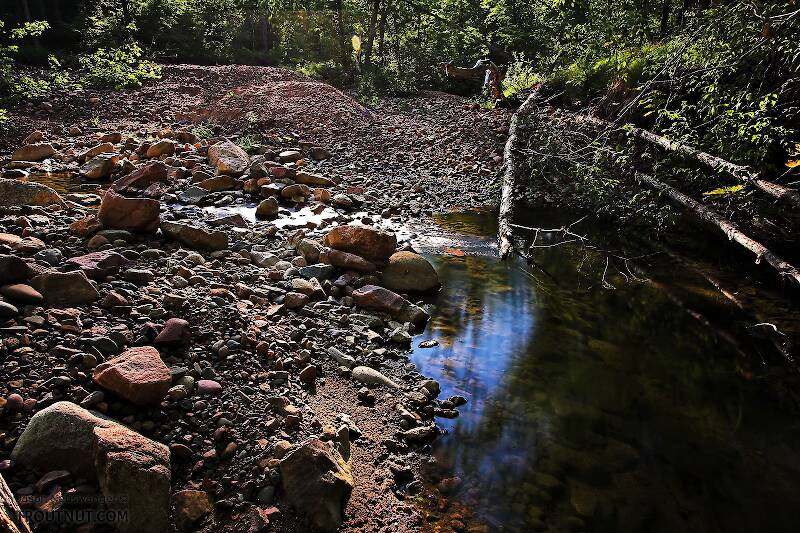


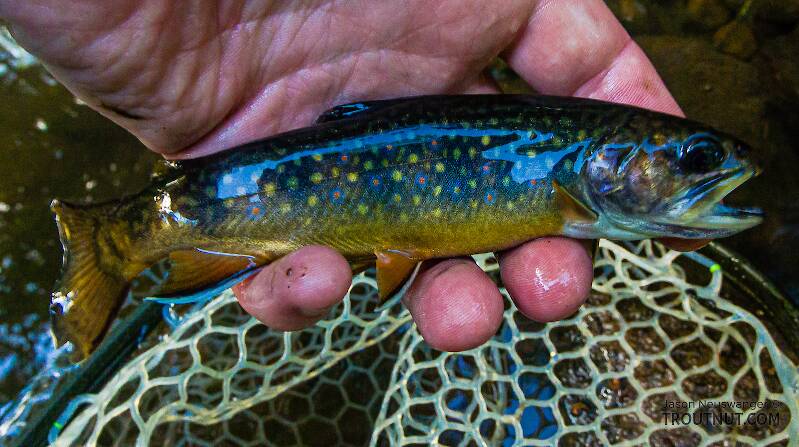
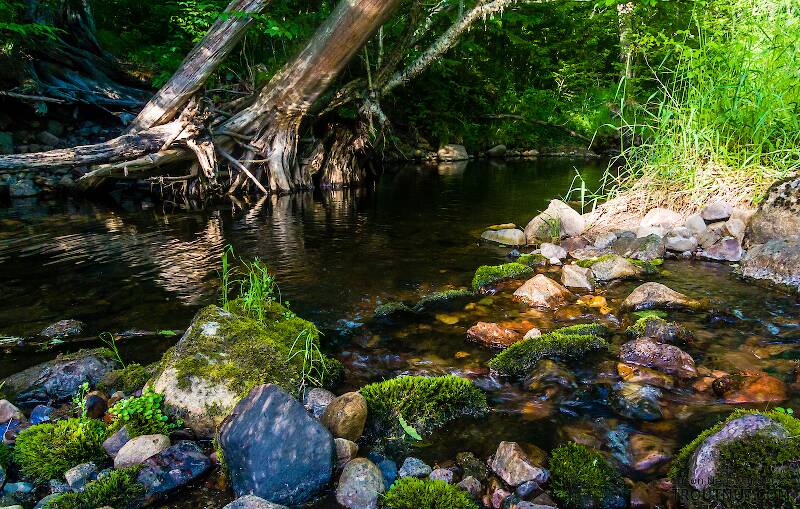
Underwater photos from Spring Creek
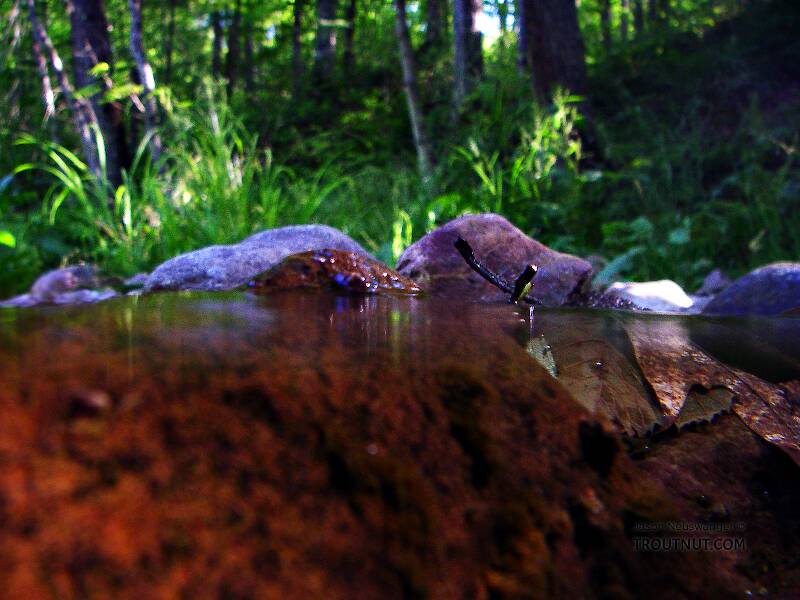
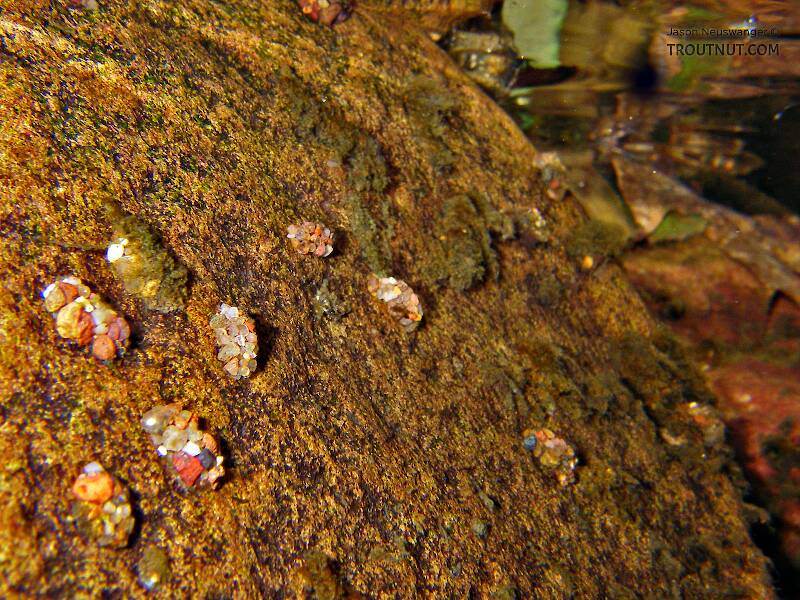
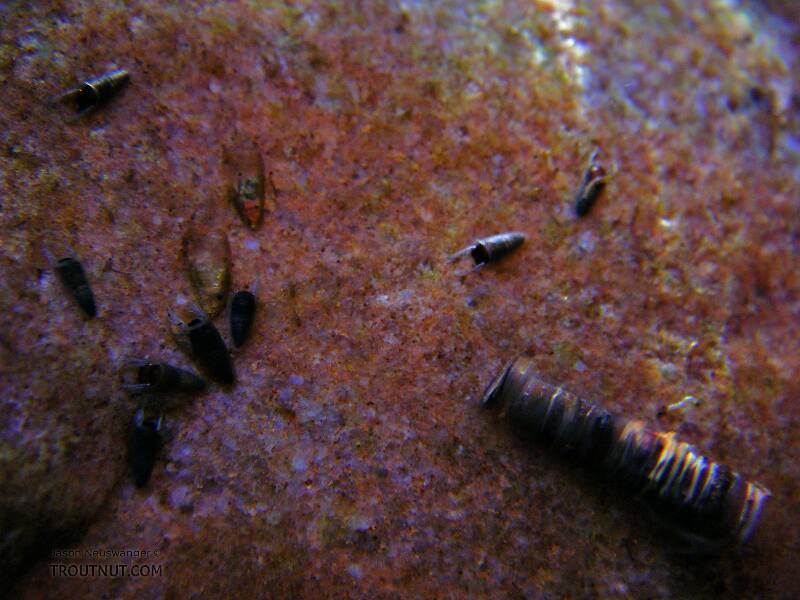
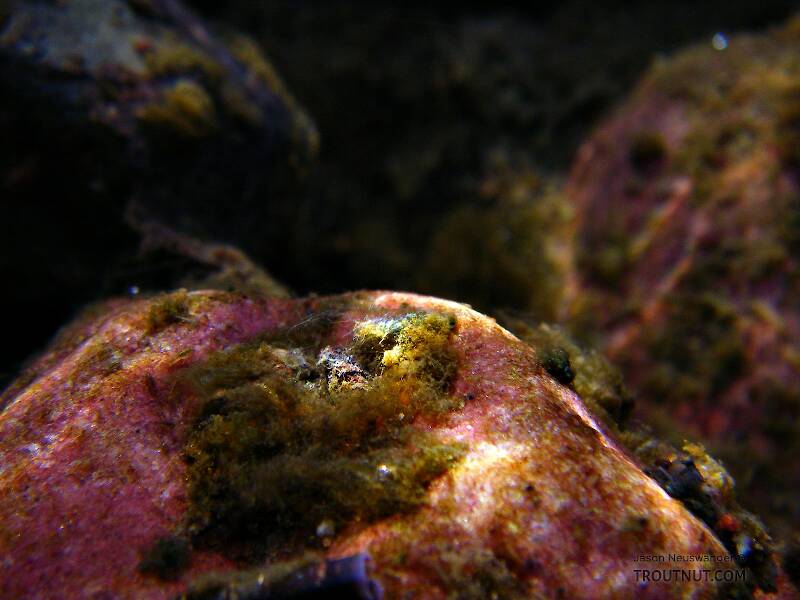
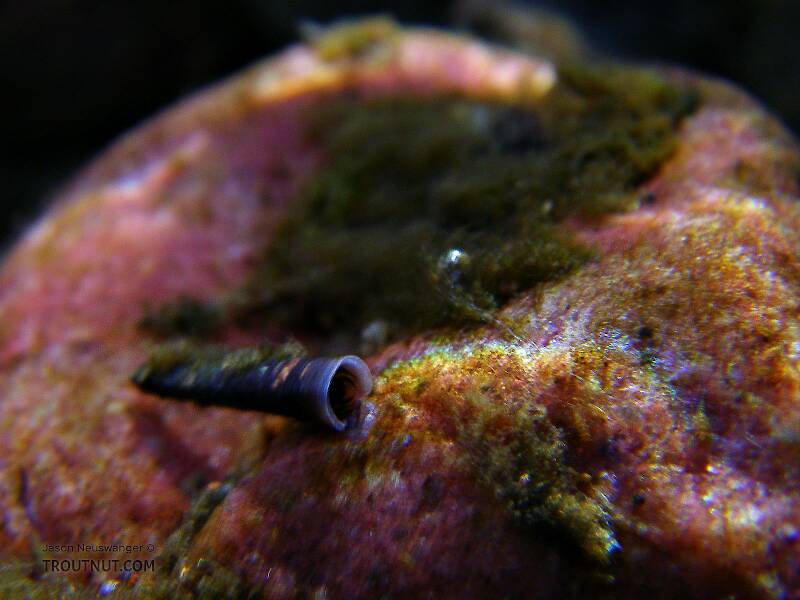
Closeup insects by Troutnut from Spring Creek in Wisconsin
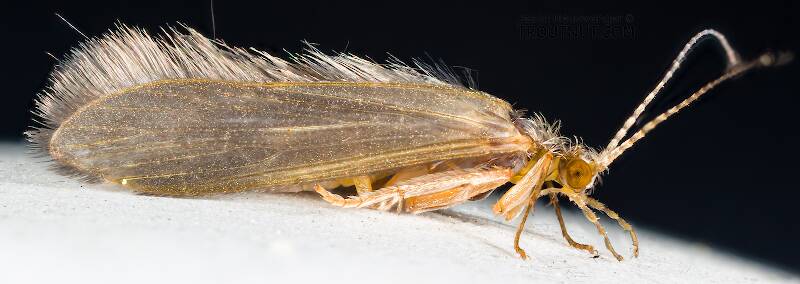
I'm tentatively classifying this one as Dibusa angata because I cannot see any ocelli in my dorsal view of the head (and because it has a single spur on each front tibia). However, sometimes they can be difficult to spot when obscured behind setae in general, so I'm not 100 % sure on this one. If there are ocelli I missed, then based on ranges and colors the genus ought to be Stactobiella.
References
- Baumann, Richard W. 1975. Revision of the Stonefly Family Nemouridae (plecoptera) : a Study Of The World Fauna At The Generic Level. Smithsonian Contributions to Zoology undef(211): 1-74.

